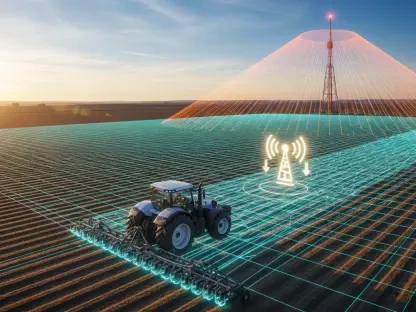In the lush yet vulnerable landscapes of Hawaiʻi, where wildfires pose an ever-growing threat to communities and ecosystems, a groundbreaking technological advancement is changing the game for safety and emergency response. Hawaiian Electric Company (HECO) has embarked on a transformative journey by deploying 180 AI-powered cameras across Hawaiʻi Island, Oʻahu, and Maui County, in collaboration with ALERTWest. This initiative marks a significant leap forward in detecting and managing wildfires, particularly in remote areas where early intervention is often challenging. By harnessing artificial intelligence to scan panoramic images for signs of smoke every two minutes, the system provides a critical window for response. Human operators then verify potential threats and alert local emergency managers, integrating Hawaiʻi into a vast network spanning 11 states. This fusion of cutting-edge technology and human oversight is setting a new standard for wildfire prevention, promising enhanced protection for the islands’ residents and natural beauty.
Enhancing Early Detection with AI Technology
The deployment of AI-driven cameras by HECO represents a pivotal shift in how wildfires are detected and addressed in Hawaiʻi’s diverse terrain. These cameras, strategically placed across 41 sites on Hawaiʻi Island alone, capture comprehensive visual data that AI algorithms analyze for smoke indicators, ensuring rapid identification of potential fire outbreaks. Once a threat is flagged, human reviewers at ALERTWest’s operations center in California confirm the findings before notifying local first responders, creating a seamless chain of communication. This system not only accelerates the detection process but also offers real-time imagery accessible to the public, fostering transparency and community awareness. While the technology has already shown promise in spotting fires in hard-to-reach areas, environmental factors like cloud cover can occasionally hinder visibility, as seen along the Hāmākua Coast. Nevertheless, even partial data on smoke characteristics has proven valuable in guiding response efforts, highlighting the system’s potential to save lives and property through proactive measures.
Strengthening Emergency Coordination and Future Growth
Beyond detection, the AI camera network is redefining emergency response coordination across Hawaiʻi by providing a unified visual platform for all stakeholders involved in wildfire management. Hawaiʻi County Fire Chief Kazuo Todd has noted the immense benefit of shared real-time imagery, which ensures that responders and emergency operations center personnel operate with the same critical information, enabling swift and cohesive decision-making. Despite the success of the current setup with 56 cameras on Hawaiʻi Island, gaps in coverage remain a concern, prompting discussions about expanding the network and exploring mobile camera units to track fire progression more dynamically. HECO spokesperson Darren Pai has expressed optimism about scaling the program to address these challenges, reflecting a commitment to adapt to the islands’ unique environmental conditions. Looking back, this initiative demonstrates a proactive stance in blending technology with human expertise, and moving forward, the focus remains on closing coverage gaps and enhancing adaptability to ensure comprehensive wildfire safety for all communities.









